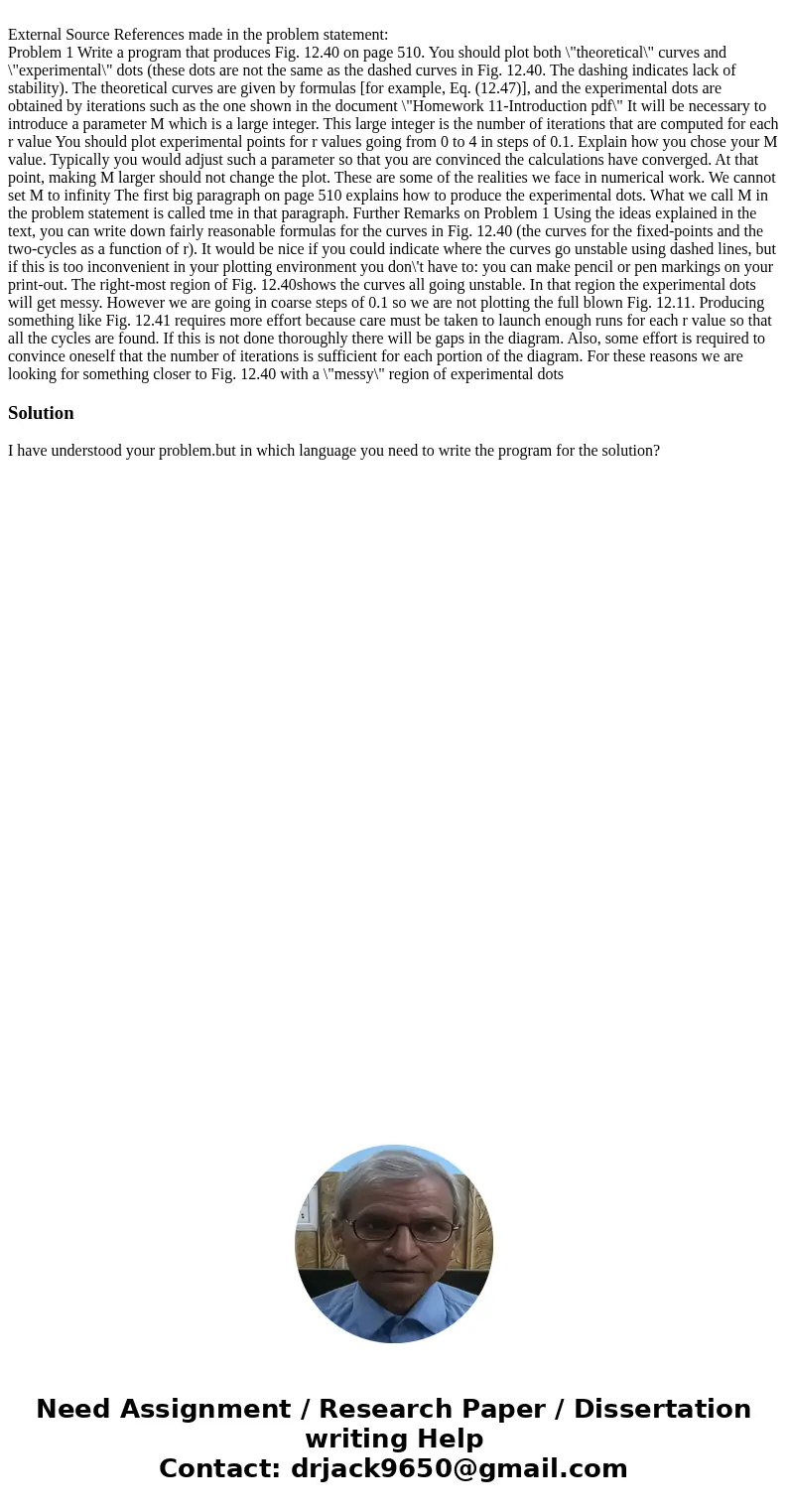External Source References made in the problem statement Pro
External Source References made in the problem statement:
Problem 1 Write a program that produces Fig. 12.40 on page 510. You should plot both \"theoretical\" curves and \"experimental\" dots (these dots are not the same as the dashed curves in Fig. 12.40. The dashing indicates lack of stability). The theoretical curves are given by formulas [for example, Eq. (12.47)], and the experimental dots are obtained by iterations such as the one shown in the document \"Homework 11-Introduction pdf\" It will be necessary to introduce a parameter M which is a large integer. This large integer is the number of iterations that are computed for each r value You should plot experimental points for r values going from 0 to 4 in steps of 0.1. Explain how you chose your M value. Typically you would adjust such a parameter so that you are convinced the calculations have converged. At that point, making M larger should not change the plot. These are some of the realities we face in numerical work. We cannot set M to infinity The first big paragraph on page 510 explains how to produce the experimental dots. What we call M in the problem statement is called tme in that paragraph. Further Remarks on Problem 1 Using the ideas explained in the text, you can write down fairly reasonable formulas for the curves in Fig. 12.40 (the curves for the fixed-points and the two-cycles as a function of r). It would be nice if you could indicate where the curves go unstable using dashed lines, but if this is too inconvenient in your plotting environment you don\'t have to: you can make pencil or pen markings on your print-out. The right-most region of Fig. 12.40shows the curves all going unstable. In that region the experimental dots will get messy. However we are going in coarse steps of 0.1 so we are not plotting the full blown Fig. 12.11. Producing something like Fig. 12.41 requires more effort because care must be taken to launch enough runs for each r value so that all the cycles are found. If this is not done thoroughly there will be gaps in the diagram. Also, some effort is required to convince oneself that the number of iterations is sufficient for each portion of the diagram. For these reasons we are looking for something closer to Fig. 12.40 with a \"messy\" region of experimental dots Solution
I have understood your problem.but in which language you need to write the program for the solution?

 Homework Sourse
Homework Sourse